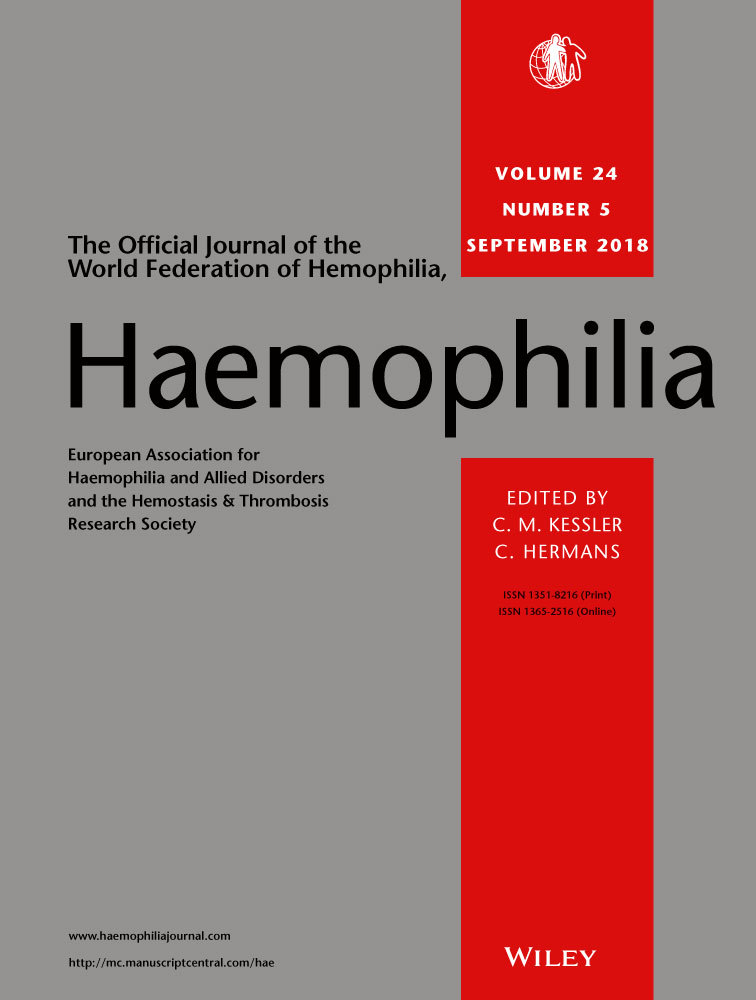Pain assessment and management in haemophilia: A survey among Italian patients and specialist physicians
Abstract
Introduction
Persons with haemophilia (PWH) experience recurrent joint bleeding which leads from early synovitis to irreversible joint damage. Pain strongly affects patients’ quality of life, as PWH suffer from acute pain associated with haemarthroses and chronic pain due to arthritic and degenerative complications.
Aim
To investigate pain issues among PWH and their treaters in Italy.
Methods
Persons with haemophilia and specialist physicians responded to a survey focused on pain characteristics, assessment, and management by phone call and online, respectively.
Results
One hundred and nineteen patients (76% severe haemophilia, 61% ≥18 years) and 44 physicians were involved. Pain was reported by 61% of PWH; among those who did not experience pain, 70% were children on prophylaxis. Patients described pain as chronic (71%), acute (69%) or postoperative (8%), and rated it as severe in 65% of cases. Clinicians reported lower percentages of patients with pain (46%), classified as chronic (58%), acute (33%) or postoperative (21%), half using specific scales. Pain was systematically investigated by treaters according to 36% of patients. Paracetamol was largely the most prescribed first-line pain therapy (89%), as well the most employed analgesic by PWH (51%), who also used non-steroidal anti-inflammatory drugs (24%), cyclo-oxygenase-2 inhibitors (21%) or opioids (26%). To manage pain, 61% of clinicians stated to collaborate with other specialists. Physiotherapy was often suggested but less frequently used by PWH.
Conclusions
Pain is under-recognized and unsatisfactorily addressed by haemophilia treatment centre (HTC) clinicians, with discrepant management compared to PWH responses. Education in systematic pain assessment and multidisciplinary treatment and development of management guidelines are highly needed.
DISCLOSURES
AT acted as a member of an advisory board for Bayer, Novo Nordisk and Roche and as paid invited speaker for Novo Nordisk. MF acted as a member of an advisory board for Bayer. GQ acted as a member of advisory board or paid invited speaker for Bayer, Novo Nordisk and Sobi. AC acted as a member of advisory board or paid invited speaker for Bayer and Novo Nordisk. GFR and SF had nothing to disclose.




